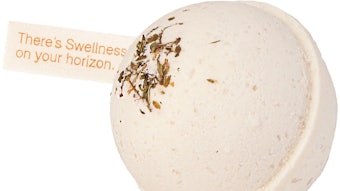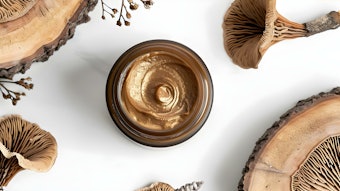
In addition to a topical skin care routine, noticeably beautiful skin is best achieved by implementing a strategic lifestyle, diet and supplementation plan that optimizes skin health. It is important that clients understand the skin’s visible surface is just a single element of a broader complex of physiological systems that function synergistically to maintain the well-being of skin. Because the skin is the largest organ in the body—one that is alive, sensitive and reactive—it is the most exposed organ to external influences, such as UV rays, pollution and harsh weather. Skin is equally responsive to internal processes that can be altered drastically by stress, sleep and other lifestyle factors.
A whole-body approach to skin care should be palpable throughout the entire duration of your interaction with clients—from intake, to treatment, to post-treatment home care. A focus on diet, supplementation and lifestyle should also be integrated into all aspects of your business practice, including your retail space and marketing campaigns.
Intrinsic and extrinsic
The aging process occurs in two ways: intrinsically and extrinsically.
Intrinsic aging. This is the progressive manifestation of a client’s genetic heritage and physiological degeneration. Although people cannot alter their genetic codes, they can influence the extrinsic aging process with lifestyle and dietary choices.
Extrinsic aging. This occurs due to an accumulation of external influences, such as sun damage, food selection, stress, sleep, and health and lifestyle choices, including alcohol consumption and cigarette smoking.
Oxidation is a normal occurrence in cellular functions. While a very small percentage of cells are damaged during the metabolization of oxygen, the body naturally produces antioxidants to counteract the free radicals and prevent their formation or chain-reaction replication. However, external contaminants from dietary and lifestyle habits generate more free radicals than the body can combat, causing excess damage and accelerated skin deterioration.
Without the support of a healthy lifestyle and diet from the client, any professional skin care treatment has its limits. For example, you can treat a client for excessive dryness with an intensive moisturizing regimen, but the skin cannot truly heal if the client smokes cigarettes and regularly forgoes quality sleep. Hence, educating clients about how much external influences affect their skin will benefit them immensely.
As a skin care professional, educating your clients about the positive effects of a healthy lifestyle and diet can reduce the severity of the aging process. Because of this, no skin analysis or skin consultation would truly be complete without understanding your clients’ lifestyle and dietary habits. This knowledge will aid in making informed decisions about appropriate treatment protocols and outcome expectations.
Introducing diet, lifestyle and supplementation
In order to incorporate diet, lifestyle and supplementation as part of your professional skin care treatment program, start by asking your clients to fill out an intake form so you can refer to their responses during the first skin assessment, as well as follow-up appointments. To ensure the most accurate assessment, also verbally engage the client about their lifestyle habits and choices, because written forms do not always capture meaningful experiences or exceptions. For example, a client can write that they do not smoke cigarettes, but they may have quit very recently, which would still impact the skin’s appearance.
Once you complete the intake and interview, briefly educate your client on the basics of skin physiology and what the skin needs to maintain optimal health, underscoring the importance of a balanced diet and healthy lifestyle, in addition to topical skin care.
Although skin care professionals cannot prescribe diets and supplementation, educating and informing clients during the skin analysis process can help them make better lifestyle choices when they exit your doors. Consultation forms should include questions concerning diet and lifestyle. See Diet, Supplementation and Lifestyle Client Questions for a sample of the types questions to ask.
Diet
A thoughtfully planned, nutrient-rich diet hinders the physiological aging mechanisms in tissues, not only by preventing malnutrition, but also by adding high quantities of beneficial nutrients, particularly antioxidants found in foods, such as grapes and blueberries. The combination of dietary substances also affects skin health. For example, a high-glycemic with a low-fat or fat-free diet can accelerate the aging process and have a negative impact on the skin.1, 2
It is also important to advise clients about how nutrients are affected by the cooking process. When food is heated, oxidation of nutrients increases drastically, often draining foods of essential nutrients.3, 4
Sugar. A diet high in sugar can cause the glycation of collagen. Sugar attaches to the proteins collagen and elastin, and causes a cross-linking process promoting elastosis and wrinkles.5 Instead, recommend a diet high in vegetables, low glycemic-index fruits and lean proteins. Supplement this with antioxidants, such as alpha lipoic acid, vitamins C and E, and glutathione.
Fats. Diets high in saturated fats can block the body’s ability to utilize essential fatty acids (EFAs). EFAs—most notably omega-3 and -6—are the best fats for the skin, and their absence has a significantly harmful impact. EFAs can only be obtained from diet and supplementation. Sources of omega-3 and -6 include oily fish, such as salmon and mackerel; flax, borage and evening primrose oils; green, leafy vegetables; and some plant seed oils, such as grape seed oil.
EFAs are responsible for the production of prostaglandins, which are important in wound-healing and regulation of the inflammatory response. They also promote a permeable cell membrane for the active and passive cell transfer of nutrients and wastes, and enhance barrier function, which retards transepidermal water loss (TEWL).6
Visible signs of EFA deficiency in the skin include:
- Skin that is unresponsive to treatment;
- Dry skin conditions and an impaired acid mantle;
- Reduced capacity to heal; and/or
- Lack of elasticity.
Fluid intake
Recommend a consistent, substantial intake of fluids, preferably plain, filtered water. The recommended amount of water is approximately 64 ounces per day. Advise clients to avoid juices and sodas with a high sugar content.
Hydration is a key element for all processes in the dermal and epidermal layers of the skin. Free water that is made available through proper hydration will affect the function of different enzyme activities in the dermal and epidermal layers. Lack of hydration will slow down enzymatic processes in the skin.
In the dermal layer, these enzymes are responsible for the removal and replacement of new tissue. In the epidermal layer, the enzymes are required for normal desquamation to take place.
Visible signs of lack of hydration include:
- Dry, dehydrated skin;
- Loss of structural integrity and density in the dermis; and
- Excess buildup of keratin.
Supplementation
Supplement recommendations depend on clients’ individual food intake and habits. By carefully analyzing a client’s dietary habits, you may be able to make recommendations based on which nutrients they lack. It is important that you recommend clients contact their physician before starting a new supplement program. Also, be able to refer a qualified nutritionist they can work with to help get their intake on track. Generally, the supplements most beneficial for skin include the following.
- Antioxidants—remember, food is the best source of antioxidants that protect against free-radical damage.
- Calcium
- EFAs
- Glucosamine
- Hyaluronic acid
- Magnesium
- Silica
- Vitamin A
- Vitamin C
- Zinc
To positively affect the aging process, it is important to work at both the cellular level of the skin, as well as topically to supply these same nutrients, particularly antioxidants and EFAs.
Lifestyle
Maintaining a healthy lifestyle is also important to skin care. Any lifestyle habit that promotes free radicals—such as smoking, excessive exercise and poor dietary habits—creates inflammation and accelerates the aging process. Tobacco smoke has been shown to decrease capillary and arteriolar blood flow, and may harm the fibroblasts in connective tissues necessary for plump skin. As a result, cigarette smoke expedites the aging process, creating wrinkles, and alters the overall framework of skin.7
Stress can also have an impact on skin appearance. High stress levels increase the level of the hormone cortisol, which increases sebum production and makes skin more vulnerable to acne.8 Stress affects the lipid barrier function of the skin, which prevents the skin from naturally repairing itself. Internal inflammation and increased sensitivity are other noted side effects of chronic stress.9
Repeated exposure to UV rays without sun protection will cause excessive damage in both the dermal and epidermal layers of the skin. Aggregate sunlight exposure causes oxidative damage in skin cells over time and is the major contributor to extrinsic aging. Make sure your clients apply sun protection on a daily basis.
Signs of poor lifestyle habits include the following.
- Loss of structural integrity and density resulting in wrinkles and sagging skin
- Sensitive, dehydrated skin
- Pigmentation
- Vascularity
Diet, lifestyle and your business
Implementing a whole-body approach at your skin care facility can result in increased business, as well as healthier clients.
Your retail area. Make diet, lifestyle and supplementation a visible component of your retail space to underscore the importance of an integrative skin care approach. While skin care products should remain in the spotlight, consider offering a range of supplements for clients to select based on their individual assessments and needs. You can also include healthy amenities, such as fresh organic fruit, raw almonds, purified water and tea. If possible, offer complimentary take-away brochures with food facts, recommendations or healthy recipes.
Collaborations. Strategic business collaborations can bring in new clients, and help reinforce the diet and lifestyle elements of your skin care facility. Seek out supplement companies, community supported agriculture (CSA) programs, wellness publications, and health and wellness coaches. Another strategy to consider is adopting the burgeoning trend in the spa community—wellness centers. Many spa facilities comprise a team of therapists who address skin conditions from an integrative approach, resulting in a more in-depth understanding of clients’ skin problems.
- Work with a reputable and/or local supplement company to sell their products alongside your skin care products, and ask for any educational marketing materials they may already have to provide to clients. Create a subscription service for your clients so that supplements are automatically delivered to them every 30–60 days for a flat monthly rate.
- Contact a CSA program near your spa and negotiate a discounted rate specifically for your clients.
- Work with a few health and wellness coaches, and negotiate a special package for your clients.
- Partner with a nutritionist to offer complimentary consultations.
Marketing. To promote the diet and lifestyle aspect of your business to existing and prospective clients, consider the following marketing strategies.
- Make sure your website reflects the whole-body approach to skin care. Include an educational resource center where clients can access a blog featuring daily health tips, videos, healthy recipes and wellness news.
- Host events at your skin care facility that focus on diet and lifestyle topics. For example, enlist a local chef to host an interactive workshop where attendees can learn to cook healthy dinners in less than 20 minutes.
- Create a Facebook fan page on which you can share new blog posts, and infographics, tips and images concerning diet, lifestyle and supplementation. Social media can also be used to host contests, sweepstakes and challenges to create buzz.
- Include diet and lifestyle tidbits in e-mail newsletters.
- Gift clients with complimentary supplement samples with the purchase of professional skin care treatments.
Set your business apart
As you incorporate diet, lifestyle and supplementation into your skin analysis process, work toward ensuring every aspect of your business—from your website to consultation to post-treatment followup—reflects your spa’s focus of integrative skin care strategies. Above all, be sure to pay attention to individual clients’ specific lifestyle habits and conditions in order to properly assess their unique needs and make the most effective recommendations.
Not only will the focus on diet and lifestyle changes drastically improve your clients’ skin health by truly effecting change in skin from within, it will also set you apart from competitors and present more business opportunities.
REFERENCES
- www.sciencedaily.com/releases/2013/02/130220084809.htm
- lpi.oregonstate.edu/infocenter/skin/EFA
- americannutritionassociation.org/newsletter/hidden-toxins-cooked-foods
- www.beyondveg.com/tu-j-l/raw-cooked/raw-cooked-1a.shtml
- www.ncbi.nlm.nih.gov/pubmed/20620757
- www.udoerasmus.com/articles/udo/fthftk3.htm
- www.mayoclinic.com/health/skin-care/SN00003
- www.sciencedaily.com/videos/2008/0411-science_of_stress.htm
- dermatology.jwatch.org/cgi/content/full/2007/1207/1
(All accessed Jun 3, 2013)











